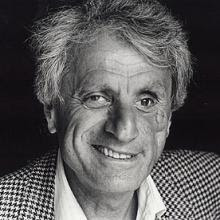At the beginning in the 1950s there was
bebop, with his harmonic complexities. Then, in the 1960s, you had
free jazz, with his stress on the melodic aspects of music and
glossolalia. Then again, in the 1970s, it was the time of the Chicago
avant garde, with his attempt to revisite the structures of the music
and its openness to contemporary music, and the European improvised
music, with every musician involved in creating their own language
detached completely from the blues. And finally, in the 1980s and
1990s, it was the time of the post-modern avant garde, with the likes
of John Zorn, Ikue Mori, Zeena Parkins, in which languages were
colliding to create games with codes.
What happened in the 2000s? In part you
have young musicians as Mary Halvorsom, who works on creating a
language of its own collaborating with masters as Anthony Braxton,
pushing the evolution on the next level, on the other hand you have a
myriads of others young musicians who are not part of a movement –
not at least while developing their own language – who are creating
music taking here and there from the history of music itself; they
have for sure mentors and masters, but they don't affect necessarily
their development as musicians.
This younger generation explore the
values of the music that came before them and then they pick some
elements useful to create their own experimentations. But this time,
there's no such a movement on their back. They're lonely. I called
this music 'post avant garde', and the record Triplain by Paolo Sorge
(reviewed
here) is a good example of this music. On the other hand you have
Sorge's scholar Santi Costanzo, who is clearly another representative
member of this 'post avant garde' style.
His new record Deeprint (Improvvisatore
Involontario, 2016) is a good example of this new tendency. As the
guitarist-composer affirms, this record has three elements:
seriality, extemporaneous composition, and free improvisation.
Seriality is a reference to the classical contemporary music of the
XX century, and it's related to melodic, polyphonic and polyrhithmic
aspects of the music. Extemporaneous composition is present in the
Prologue and Epilogue of the record, while free improvisation is
sometimes guided through the use of conductions.
What is this music we're talking about
here? It is still avant-garde? The press talked for a long time about
'post-rock' during the 2000s, and it was a music thatwas opening for
sure the boundaries of rock music. But it is this 'post avant garde'
music opening the boundaries of the avant-garde? For sure no. It is
music you can enjoy through more listenings, finding new nuances
every time, as it ever happens with complex music. But it is a music,
at least as far as we listened to nowadays, that draw elements from
the past.
It is nostalgic music for nostalgic
times, and I want to state that this is not the fault of the single
musicians, but it is fault of our times: every art is becoming more
and more conservative, and this is what's happening also to music.
But first become politics. They're influencing music, as far as I can
hear. What we can do, so? First thing is try to know everything about
the past of music – that's why Complete Communion is devoted to
document the AACM, the free jazz movement and recently also
contemporary music, with the biography of Iannis Xenakis you all read
this week.
We need to deepen the past of avant
garde music, we need to master it, we need to know more about it.
This is an era in which musicians are left alone, they have
difficulties in sharing their music, they have difficulties in
creating it. There's no such a movement as they were in the past.
This is an era of nostalgia: everybody is looking at the past, and is
trying to travel across countries that were still covered. We need to
widen our knowledge of the past, in order to help the music to find
out new ways to express itself.
As far as this record, I invite you to
listen carefully this quartet, since its combination of atonality,
electric guitar, free movements of the horns and polyrhythms will not
let you disappointed. But I invite you also to discover the music of
the past, so come back to my Xenakis biography and start listening to
new worlds. This is a strange era, and we need all our resources to
put the barricades in their correct order again, to not let pass the
Order of Homogenisation.
Line Up: Santi Costanzo, guitar and
composition; Fabio Tiralongo, flute, soprano and tenor saxophone;
Carlo Cattaneo, alto flute and baritone saxophone; Alessandro Borgia,
drums. Tracklist: Prologo, Lai, Audire Aude!, Jumpfive, Milea, Sphere
Theories, Ziqqurat, Epilogo
Santi Costanzo Official Website Here you can listen to some previews of the album












